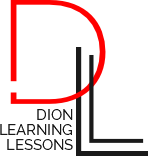Transparency, often hailed as the bedrock of trust and accountability, seems like an unequivocal virtue. However, its idealistic facade shatters when one considers its potential as a double-edged sword. This article delves into the intricate dynamics of transparency, exploring its paradoxical nature as both a cornerstone of honesty and a potential weapon when exposed in the wrong setting.
The Power of Transparency: Transparency is commonly associated with openness, honesty, and clear communication. In various aspects of life, be it in personal relationships, business transactions, or governance, transparency is touted as the key to building trust. It allows for informed decision-making, fosters accountability, and creates an environment where individuals feel valued and respected.
The Complication: Despite its apparent virtues, transparency is far from a straightforward concept. In certain situations, revealing too much information can lead to unintended consequences. The fine line between transparency and TMI (Too Much Information) can blur, making it challenging to strike the right balance. The risk lies in the fact that transparency, when mismanaged, can transform into a weapon that can harm relationships, reputation, and even security.
Less Is More: The adage “less is more” takes on a new significance in the context of transparency. Some argue that disclosing every detail might not always be the wisest choice, as the imagination of individuals receiving certain information can shape their perceptions. This interplay between transparency and the human imagination exposes the complexities of managing information flow.
Imagination and Perception: The act of transparency triggers the human mind’s imaginative powers, leading individuals to form perceptions based on the disclosed information. In some cases, this can be enlightening, but in others, it may inadvertently expose biases, preconceptions, and judgments. The delicate balance lies in providing enough information to foster understanding without overwhelming individuals with details that may be misconstrued.
Mindsets, Character, and Integrity: Transparency holds a mirror to the mindsets, character, and integrity of both the communicator and the receiver. How individuals handle the information they receive, and how much is shared, reflects not only on their values but also on their ability to navigate the complexities of human relationships. Striking this balance requires a nuanced understanding of context, audience, and the potential consequences of disclosure.
In the ever-evolving landscape of communication, transparency remains a formidable force. While its benefits are evident, its potential risks cannot be ignored. The delicate dance of transparency requires a mindful approach, recognizing that too much or too little information can have profound implications. Ultimately, navigating the complexities of transparency demands a thoughtful interplay between revealing truths and preserving the sanctity of relationships, character, and integrity.

